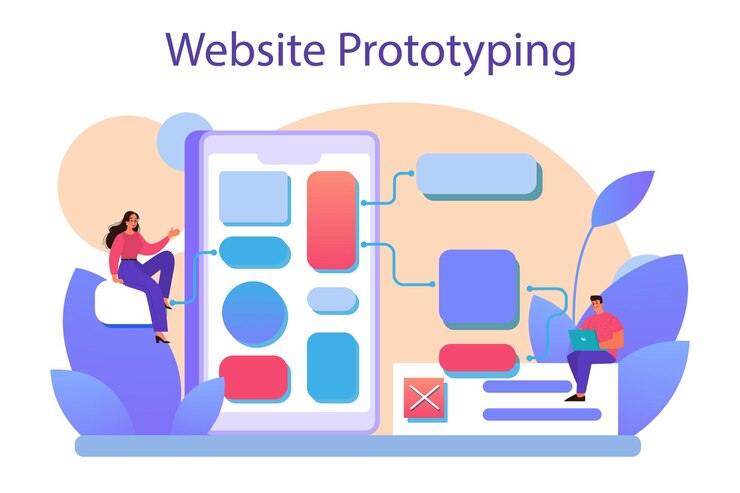Importancy of prototyping in Web Design

In website design, prototyping refers to the process of creating a preliminary, functional model of a website or web application in order to test and refine the design before the final product is developed. A website prototype is a working model of the website that can include basic navigation, user interface elements, and sample content.
Website prototyping can be done at various stages of the design process, from early sketches to high-fidelity designs that closely resemble the final product. A website prototype can be created using a variety of tools and methods, such as paper prototyping, digital wireframing tools, or interactive prototyping tools that allow designers to create clickable and interactive mockups.
The purpose of website prototyping is to allow designers to test and refine their designs in a realistic, interactive environment before development begins. Prototyping helps designers to identify usability issues, user flow problems, and other design challenges that may need to be addressed before the final product is developed. It also allows stakeholders and users to provide feedback on the design, which can be used to refine and improve the final product.
Website prototyping is an important part of the website design process because it helps designers to create better, more user-centered designs that meet the needs of users and stakeholders.
Prototyping is considered an important part of web design for several reasons, including:
1. User-centered design
Prototyping allows designers to test and refine their designs before they are fully implemented. By creating a prototype, designers can get feedback from users and stakeholders to ensure that the final product meets their needs and expectations.
2. Visualizing ideas
Prototyping allows designers to quickly and easily visualize their ideas in a tangible and interactive form. This can help designers to explore different design options, experiment with different layouts and features, and refine their design concepts.
3. Identifying design issues
Prototyping can help designers identify potential design issues early on in the design process, before significant time and resources have been invested in development. By testing a prototype with users, designers can identify usability issues, identify areas for improvement, and make changes to the design to improve the user experience.
4. Collaboration
Prototyping can be a collaborative process, allowing designers to work with stakeholders and developers to refine the design and ensure that it meets the needs of all parties involved. By sharing and testing a prototype, designers can gain valuable feedback and insights that can help them to create a better final product.
5. Cost savings
Prototyping can help to save time and money by identifying design issues early in the design process before they become more costly to fix. By creating a prototype, designers can test and refine their designs more quickly and efficiently, reducing the overall cost and time required to develop the final product.
Overall, prototyping is an important part of web design because it allows designers to test and refine their designs, identify potential issues, and create a more user-centered, collaborative, and cost-effective design process.
464 0 7
Write a Comments
* Be the first to Make Comment















